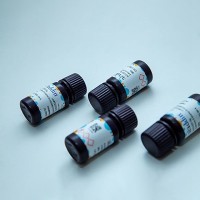Detection of Clostridium botulinum by Multiplex PCR in Foods and Feces
互联网
578
Clostridium botulinum is a diverse group of anaerobic spore-forming organisms that produce lethal botulinum neurotoxins (BoNT) during their growth. BoNTs cause a paralytic condition, botulism, to man and animals. The most common forms of human botulism include the classical foodborne botulism due to ingestion of BoNT preformed in food, and infant botulism due to spore germination, growth, and toxin production in the infant’s intestine. Botulism is diagnosed by detecting BoNT and/or C. botulinum in the patient and in suspected food samples. There are several drawbacks related to the diagnostics of botulism; the standard bioassay for toxin detection employs the use of laboratory animals, making it laborious and expensive and possessing ethical concern. Selective media for culturing the organism are not available. Neurotoxin gene-specific PCR has facilitated the detection of C. botulinum . In this chapter a multiplex PCR for simultaneous detection of C. botulinum types A, B, E, and F in foods and feces is described. The method involves sample dilution and homogenization, and two-step enrichment followed by cell wash, cell lysis, and multiplex PCR. Quantification is obtained by the most-probable-number technique. Depending on the type of sample material, the detection limit of the assay varies from 10−2 to 103 spores per gram of sample material.









